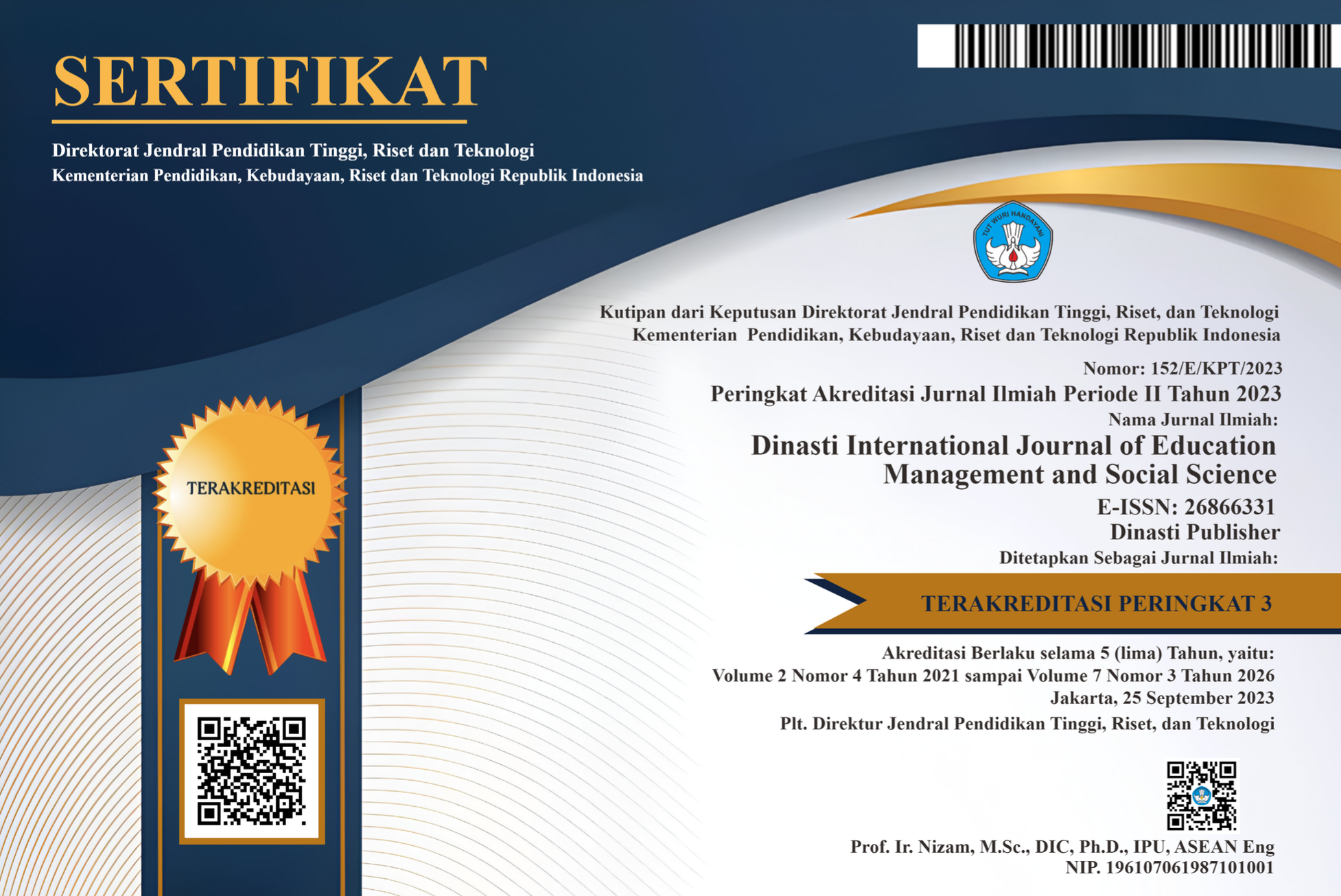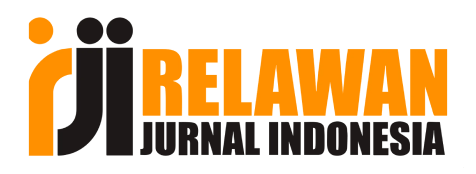Enhancing Organizational Performance Through KPI-Based Employee Prediction Using the C4.5 and Random Forest Methods
DOI:
https://doi.org/10.38035/dijemss.v6i4.4502Keywords:
C4.5, Performance, Organization, Random ForestAbstract
Employee performance evaluation is a crucial process for organizations in achieving strategic goals. PT Kreatif Dinamika Integrasi currently conducts employee assessments manually using Microsoft Excel, leading to inefficiencies, potential errors, and subjectivity. This study aims to develop a decision support system (DSS) using the C4.5 and Random Forest algorithms to improve accuracy and fairness in performance evaluation. The research adopts a quantitative approach, encompassing problem analysis, literature review, data collection, machine learning model implementation, and result evaluation. The key performance indicators (KPIs) used include discipline, punctuality, skills, appearance, and education, which serve as attributes in the classification process. The C4.5 algorithm constructs a decision tree to identify patterns, while Random Forest, as an ensemble method, enhances classification accuracy and reduces the risk of overfitting. The results indicate that using Random Forest improves evaluation accuracy from 85% to 87.5%. The implementation of this DSS provides a more reliable framework for salary and bonus prediction, minimizes bias, and enhances decision-making quality. Overall, integrating machine learning models into employee performance evaluation significantly improves efficiency and transparency.
References
Aini, N., Arif, M., Agustin, I. T., & Toyibah, Z. B. (2024). Implementasi Algoritma Random Forest untuk Klasifikasi Bidang MSIB di Prodi Pendidikan Informatika. Jurnal Informatika, 11(1), 11–16. https://doi.org/10.31294/inf.v11i1.20637
Anwar Prabu Mangkunegara, A. A. (2010). Manajemen sumber daya manusia perusahaan. PT Remaja Rosdakarya.
Bijalwan, P., Gupta, A., Mendiratta, A., Johri, A., & Asif, M. (2024). Predicting the productivity of municipality workers: A comparison of six machine learning algorithms. Economies, 12(1). https://doi.org/10.3390/economies12010016
Deep Prakash, C., & Verma, S. (2022). A new in-form and role-based deep player performance index for player evaluation in T20 cricket. Decision Analytics Journal, 2. https://doi.org/10.1016/j.dajour.2022.100025
Devia, E. (2023). Penerapan decision tree dengan algoritma C4.5 untuk menentukan rekomendasi kenaikan jabatan karyawan.
Dinisari, M. C. (2019). Microsoft ganjar penghargaan untuk Kreatif Dinamika Integrasi. Bisnis.com. https://teknologi.bisnis.com/read/20191127/84/1175148/microsoft-ganjar-penghargaan-untuk-kreatif-dinamika-integrasi
Dwi Egie, P., Sumardi, H. R., & Nunung, N. (2019). Pengaruh kompensasi dan gaya kepemimpinan terhadap kinerja karyawan di Sekretariat DPRD Kabupaten Indramayu.
Es-Sabery, F., & Hair, A. (2020). A MapReduce C4.5 decision tree algorithm based on fuzzy rule-based system. Fuzzy Information and Engineering, 11(4), 446–473. https://doi.org/10.1080/16168658.2020.1756099
Fitriana, H. L., Feriantono, I., Laily, S. I., & Jakaria, R. B. (2024). Penilaian kinerja karyawan menggunakan Key Performance Indicator (KPI) pada PT. Hilfic. Venus: Jurnal Publikasi Rumpun Ilmu Teknik, 2(4), 333–341. https://doi.org/10.61132/venus.v2i4.448
Galih, & Eriyadi, M. (2022). Perbandingan model NBC, SVM, dan C4.5 dalam mengukur kinerja karyawan berprestasi pasca pandemi Covid-19. Jurnal Informatika, 9(2). http://ejournal.bsi.ac.id/ejurnal/index.php/ji
Gibson, J. L., Ivancevich, J. M., & Donnelly, J. H. (1996). Organization: Perilaku, struktur, proses jilid 1-8/E. (N. Adiarni, Trans.; L. Saputra, Ed.). Binarupa Aksara.
Ignatius, W. (2005). Dasar-dasar ilmu organisasi. Andi. https://elibrary.bsi.ac.id/readbook/205321/dasar-dasar-ilmu-organisasi
Kathirisetty, N., Jadeja, R., Garg, D., & Thakkar, H. K. (2022). On the design of student assessment model based on intelligence quotient using machine learning. IEEE Access, 10, 48733–48746. https://doi.org/10.1109/ACCESS.2022.3171807
Kompascom. (2024). PT Kreatif Dinamika Integrasi raih Microsoft Partner of the Year Indonesia 2024. https://money.kompas.com/read/2024/07/04/205947026/pt-kreatif-dinamika-integrasi-raih-microsoft-partner-of-the-year-indonesia
Kusumaningtyas, G. Y. R. T., & Wahyuddin, M. I. (2022). Implementasi algoritma C4.5 dan simple additive weight untuk menentukan KPI karyawan. Building of Informatics, Technology and Science (BITS, 3)(4), 519–527. https://doi.org/10.47065/bits.v3i4.1356
López-Santiago, J., Md Som, A., Ruiz-Garcia, L., Zubelzu Mínguez, S., & Gómez Villarino, M. T. (2024). Assessment of environmental management performance in wineries: A survey-based analysis to create key performance indicators. Environments - MDPI, 11(7). https://doi.org/10.3390/environments11070139
Lubis, P. I., & Kusumanto, I. (2018). Penilaian kinerja karyawan menggunakan metode Key Performance Indicators (KPI) (Studi kasus: CV. Bunda Bakery Pekanbaru). Jurnal Sains, Teknologi dan Industri, 15(2), 37–45.
Naufal, N. R. A., & Kholik, M. A. (2024). Sistem pendukung keputusan penilaian kinerja karyawan menggunakan algoritma decision tree. https://mail.jurnal.stmik-yadika.ac.id/index.php/spirit/article/view/346/324
Novianti, R. A. (2016). Pengaruh stres kerja terhadap motivasi kerja dan dampaknya terhadap kinerja karyawan di bagian funding officer dan accounting officer PT. Bank Rakyat Indonesia (Persero), Tbk. Cabang Bangkalan, Madura. https://ejournal.unesa.ac.id/index.php/jim/article/view/17872
Ompusunggu, E. S., Nainggolan, A., Sihombing, M. K., Sains, F., & Teknologi, D. (2023). Penentuan kelayakan promosi pegawai menggunakan algoritma random forest classifier dan XGBoost classifier. Jurnal TEKINKOM, 6(2). https://doi.org/10.37600/tekinkom.v6i2.949
Pahlevi, O., & Handrianto, Y. (2023). Implementasi algoritma klasifikasi random forest untuk penilaian kelayakan kredit. Jurnal, 5(1). http://ejournal.bsi.ac.id/ejurnal/index.php/infortech
Rahmayani, S. (2025). SPK seleksi calon karyawan PT Jasa Raharja menggunakan metode kombinasi ARAS dan weighted product. 206–222. https://doi.org/10.59841/saber.v3i1.2228
Robbins, S. P., & Judge, T. A. (2013). Organizational behavior (15th ed.). Pearson Prentice Hall. https://digilib.stekom.ac.id/ebook/view/ORGANIZATIONAL-BEHAVIOR-15TH-EDITION
Rochmat Asyhari, M., Alijoyo, A., & Vernanda, D. (2024). Penerapan algoritma C4.5 dan metode 360° pada sistem informasi penilaian karyawan. Jurnal Teknologi Komputer, 18(1). https://doi.org/10.33365/jtk.v18i1.3215
Surapati, U., & Prasetyo, A. (2022). Penerapan algoritma C4.5 dalam menentukan karyawan terbaik pada Klinik Hosana Jakarta Barat. Jurnal Pendidikan dan Konseling, 4. https://journal.universitaspahlawan.ac.id/index.php/jpdk/article/download/6737/5086/22159
Wibowo, P. D. (2014). Perilaku dalam organisasi. Rajawali Pers.
Witasari, D., & Jumaryadi, Y. (2020). Aplikasi pemilihan karyawan terbaik dengan metode simple additive weighting (Studi kasus Citra Widya Teknik). Teknologi Informatika dan Komputer. https://doi.org/10.24853/justit.10.2.115-122
Yuliana, H., Hendrawan, Iskandar, & Musashi, Y. (2024). Estimating base station traffic and throughput using machine learning based on hourly key performance indicator (KPI) network analysis. IEEE Access, 12, 116285–116301. https://doi.org/10.1109/ACCESS.2024.3447098
Yurtay, Y., et al. (2023). Improvement and implementation of sustainable key performance indicators in supply chain management. IEEE Access, 11, 41913–41927. https://doi.org/10.1109/ACCESS.2023.3271138
Downloads
Published
How to Cite
Issue
Section
License
Copyright (c) 2025 Grasiella Yustika Rezka Talita Kusumaningtyas, Agung Triayudi

This work is licensed under a Creative Commons Attribution 4.0 International License.
Authors who publish their manuscripts in this journal agree to the following conditions:
- The copyright on each article belongs to the author(s).
- The author acknowledges that the Dinasti International Journal of Education Management and Social Science (DIJEMSS) has the right to be the first to publish with a Creative Commons Attribution 4.0 International license (Attribution 4.0 International (CC BY 4.0).
- Authors can submit articles separately, arrange for the non-exclusive distribution of manuscripts that have been published in this journal into other versions (e.g., sent to the author's institutional repository, publication into books, etc.), by acknowledging that the manuscript has been published for the first time in the Dinasti International Journal of Education Management and Social Science (DIJEMSS).















































